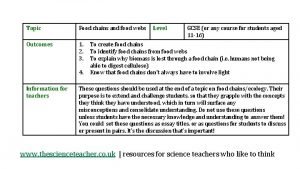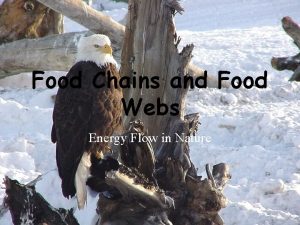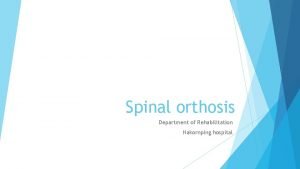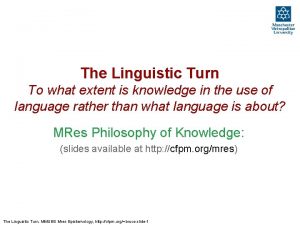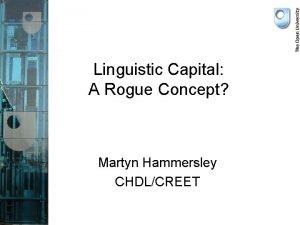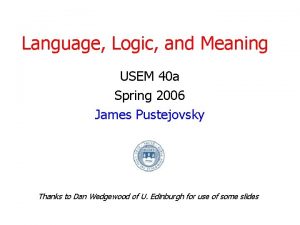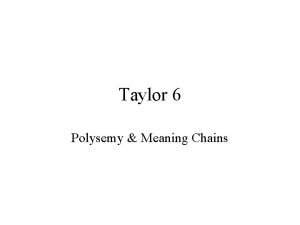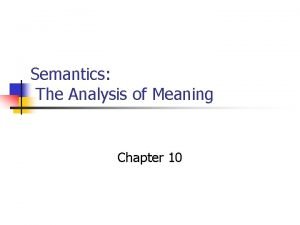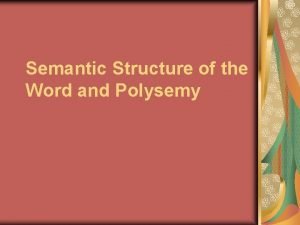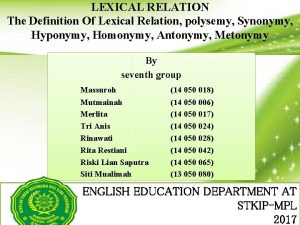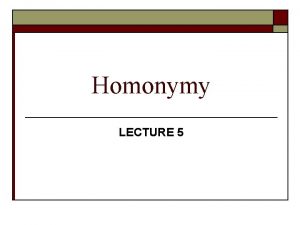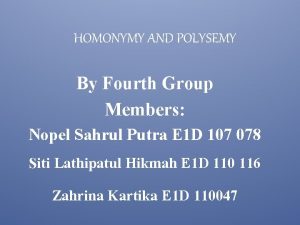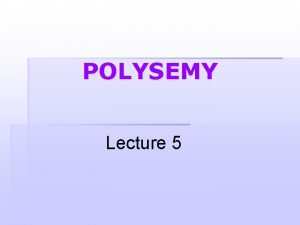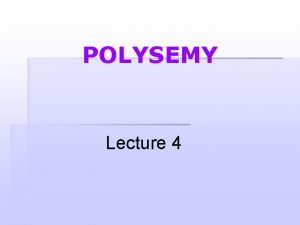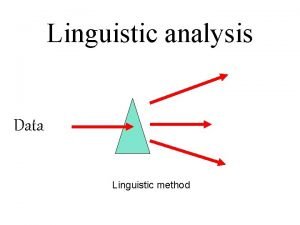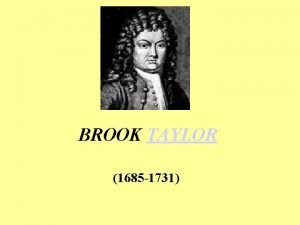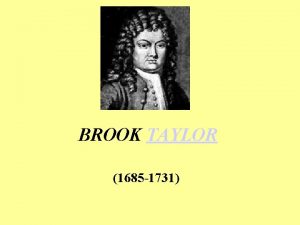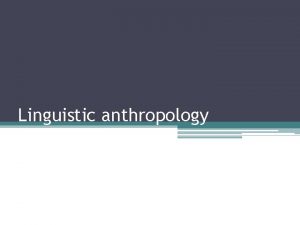Taylor 6 Polysemy Meaning Chains Overview Many linguistic













- Slides: 13

Taylor 6 Polysemy & Meaning Chains

Overview • Many linguistic categories are associated with several prototypes. • This chapter will talk about family resemblance and problems with that model.

6. 1 Monosemous & Polysemous Categories • Polysemy -- “the association of two or more related senses with a single linguistic form”, e. g. school • Note that the related senses are often operative in different domains • Sometimes it is hard to tell whether you have monosemy or polysemy -- ambiguity is a key test

3 Tests for Ambiguity Test 1: Does an expression have more than one reading? Ambiguity is indicative of polysemy, but vagueness is not. Ambiguity: I don’t want a pig in the house -- this can refer to either an animal or a slob, but it has to refer to one or the other Vagueness: There’s a bird in the garden -- this can refer to a variety of different birds, we don’t need to know which one

3 Tests for Ambiguity Test 2: Can the different senses be coordinated in a single construction? Arthur and his driver’s license expired last Thursday. My kids drive me crazy and I drive them everywhere else.

3 Tests for Ambiguity Test 3: do so too requires selection of only one meaning I don’t want a pig in the house and neither does Jane -- this requires that both I and Jane be referring to the same sense of pig

3 Tests for Ambiguity • These tests are not perfect. • “the boundary between monosemy and polysemy is fuzzy” • [LAJ -- These tests are also focused almost exclusively on polysemy of lexical items. It is my experience that polysemy exists throughout grammar, but these tests would not apply smoothly]

Polysemy vs. Homonymy • “The different meanings of a polysemous lexical item are felt to be related in some non-trivial way. ” • “Homonymy is when unrelated meanings attach to the same phonological form. ” • But again, the boundary between the two is fuzzy. • Previous approaches have tended to describe all phenomena in terms of homonymy, denying the existence of polysemy.

6. 2 Climb & 6. 3 Over • The point of these case studies is that there are polysemous categories that do NOT have a single core meaning shared bu all members. There is no meaning of climb (such as laborious use of limbs, upward motion) that is shared by all uses. Instead, there is a chaining of meanings creating a network. The same goes for over: the meaning of prepositions seems chaotic and shows great variation from language to language.

6. 4 Some Problems • If some members are more central than others, what gives them this central status? • Perhaps “the central member shares a maximum number of attributes with other members”? -- but this doesn’t work for large and complex categories like over.

6. 4 Some Problems, cont’d. • Another possibility: – “the central member is … that member from which all others can be most plausibly and most economically related”

6. 4 Some Problems, cont’d. • Another problem: – “are there constraints on the polysemization process”? Are there “impossible categories”? Can anything get associated with anything else in a category? • “if it is not possible to state absolute constraints on the content of family resemblance categories, it might nonetheless be the case that certain kinds of meaning extension are more frequent, more typical, and more natural than others. ” We should be looking for these patterns.

6. 4 Some Problems, cont’d. • Final problem: – What is the process by which different things get associated in the first place? This question will be addressed in Chapter 7.
 How many food chains are there in the food web
How many food chains are there in the food web The many overlapping food chains in an ecosystem
The many overlapping food chains in an ecosystem Consist of many overlapping food chains
Consist of many overlapping food chains Knight orthosis
Knight orthosis Linguistic turn meaning
Linguistic turn meaning Linguistic capital meaning
Linguistic capital meaning Entailment in semantics
Entailment in semantics Polysemy and homonymy
Polysemy and homonymy Examples of polysemy
Examples of polysemy What is polysemy and examples?
What is polysemy and examples? Semantic structure of a word
Semantic structure of a word Polysemy synonymy hyponymy and antonymy
Polysemy synonymy hyponymy and antonymy Types of homonymy
Types of homonymy Homonymy vs polysemy
Homonymy vs polysemy
